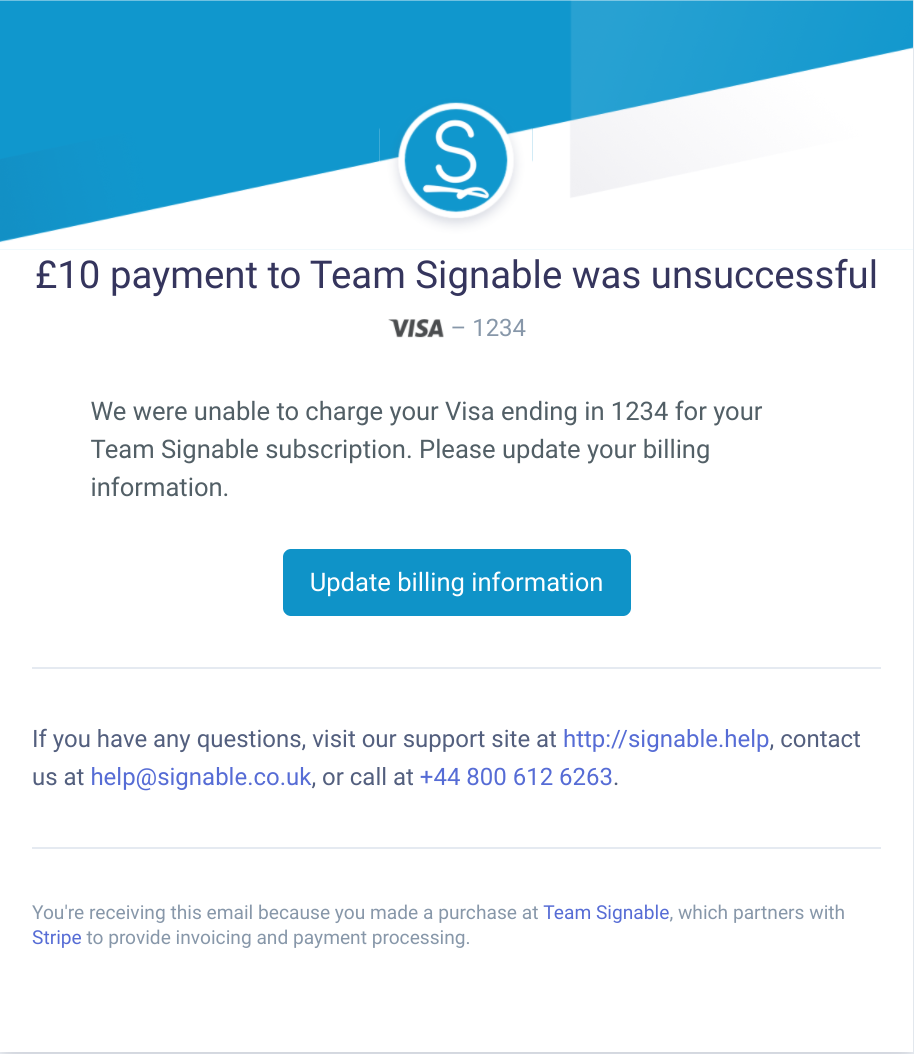Table of Contents

Key takeaways:
- Dunning emails help you prevent involuntary churn by letting customers know about failed payment methods
- Optimizing each component of a dunning email can increase the chance of success
- Brands can add their brand voice and a flair of creativity to dunning emails, but having clear instructions and easy options for payment method updates is essential
- Tools like Baremetrics Recover can identify potential missed payments before they happen, leveraging dunning emails to prevent involuntary churn
When most SaaS companies talk about reducing churn, they’re usually referring to voluntary churn, when customers intentionally cancel their subscription.
However, there’s another type of churn that gets overlooked. And if you’re not careful, it can slowly eat away at your revenue and bleed your company dry.
I’m talking about involuntary churn. The customers whose subscriptions end because their credit card payments failed and they never updated their payment information.
According to our data, SaaS and subscriptions businesses lose around 9% of their MRR due to failed payments on average.
Luckily, you don’t have to just sit back and let it happen.
Actively sending emails (a.k.a dunning emails) to customers when their payments fail is your best bet at recovering that lost revenue.
Understanding Dunning Management
Dunning Management is the process of asking customers to pay you for money owed as a result of failed payments.
The payments usually fail because the card on file is expired, they have insufficient funds, or an issue with their bank.
When that happens, SaaS companies typically send an email (or series of emails) to let the customer know the payment failed. The dunning process and give them the opportunity to update their billing information and make a payment. Those emails are called dunning emails.
How to Send a Payment Failed Email
If you use a payment processing tool like Stripe, you likely have a basic subscription dunning email setup.
They typically look like this:

Source: Signable
When the email goes out, your customers just have to click on the call to action and update their info. Simple and easy.
But if you’re looking for something a little more advanced, that gives you more customization options and data, you can use a dunning tool like Recover (our product).
With Recover, you can create a series of automated dunning emails that go out to customers when their payments fail. You can also get data on how much revenue you’re recovering from your dunning emails over time.

Once you have your tool of choice, you can get down to business. Because just sending out any old email and asking for payment isn’t a guarantee you’ll get paid.
The 4 Components of A Dunning Email
The goal of your dunning email is to get your customer to update their billing information. It sounds simple, but think about all the things that need to happen in order for it to be successful.
- The email has to make it to the customer’s inbox
- The user has to open your email
- They have to read the email and decide to take action
- They may need to locate a credit card number, or alternative payment option
- They need to complete the actual task of updating their information
Subject line
Your subject line has one job: to get your customer to open the email.
Always remember that your dunning email is just one of dozens (or even hundreds) of messages in your customer’s inbox. If you want to get seen, you need to stand out.
Here's an example from CanIRank:

Email Body
The key to writing an effective dunning email is to get to the point. The body of your email should tell your customer two things (the 1-2 punch):
- What happened
- What they need to do (your call to action)
For best results, make it as easy as possible and remind users that it will only take a minute of their time.
Here’s a great example from SoapBox.

Alternative Options
Hopefully, between your subject line and the body of your email your customers update their info. But it doesn’t always work out that way.
Sometimes your customer’s payment fails because they can’t afford to keep using your product or are struggling to resolve an issue with their bank.
That’s when the “closing” of your dunning email can come in handy.
For instance, Nifty gives customers a few ways to get more help aside from updating their billing details.

Juicer has a similar approach in their dunning emails, but they link directly to their FAQ section about declined payments.
The goal here is to offer any additional options and supoprt that your customers may need, whether that includes downgrading to an affordable option (downgrades are better than cancellations) or getting additional help from your support team.
Be sure to check out our article on Tips to Improve your Dunning Email Recovery Rate.
Tired of missing out on potential revenue ? Get a free trial of Baremetrics today!




